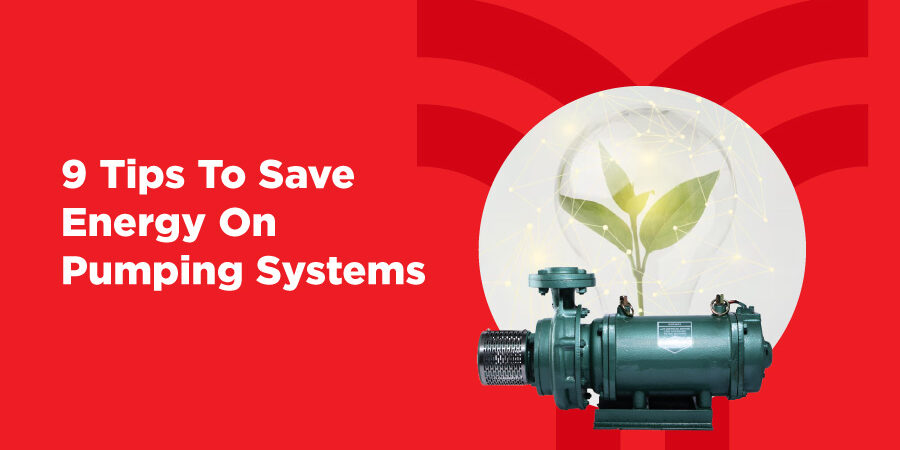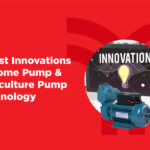9 Tips To Save Energy On Pumping Systems
From industrial plants to water treatment facilities, pumping systems are an essential part of many businesses. By using the appropriate tactics, you can cut costs and promote environmental sustainability. These nine pointers will assist you reduce the energy consumption of pumping systems.
Tips to Save Energy
Choose the Right Pump Size
The use of an oversized pump is one of the most frequent errors made in pump systems. Excessive energy consumption and system component wear and tear might result from oversized pumps. Make sure the pump you choose is the right size for the intended use. To choose the appropriate pump size, carefully examine all of the system’s needs, including flow rate and head pressure. For those considering more sustainable options, Solar Pump Manufacturers in India offer pumps designed to meet specific needs with energy efficiency in mind. If you already have a pump installed, you may be able to save a significant amount of energy by retrofitting it with a variable speed drive (VSD), which allows the pump to change its speed in response to demand.
Optimize Pumping System Design
The energy efficiency of the pumping system is largely determined by its design. Systems with poor design can have significant friction losses, which raises energy consumption. Make sure the pipes in your system are as short and straight as feasible, with as few fittings and bends as possible. To further minimize friction losses, choose pipe diameters that are suitable for the flow rate. Reducing friction can also be achieved by using smooth inner pipe surfaces. To maximize performance and cut down on energy usage, assess your system design regularly and make the required modifications.
Implement Variable Speed Drivers
Pumping systems can save energy by using variable-speed drives. With the use of VSDs, the pump’s speed can be changed to meet the demands of the system as opposed to operating at a fixed pace. This can result in significant energy savings because the pump only consumes the energy required to meet demand. VSDs can cut energy use in systems with variable demand, such as water distribution or HVAC, by up to 50%. Additionally, by lowering wear and tear, VSDs can contribute to the pump’s longer lifespan.
Perform Regular Maintenance
Maintaining the effectiveness of your pumping system requires routine maintenance. A well-maintained pump uses less energy and lasts longer because it functions more efficiently. Leak detection, seal and bearing inspection, and filter and screen cleaning are all important maintenance duties. Additionally, keep a regular eye on performance indicators like temperature, flow rate, and pressure to make sure the pump is functioning within its ideal range. By taking immediate action, you can stop any problems from growing worse and requiring more effort to fix.
Use High-efficiency Motors
The pumping system’s motor, which is its central component, has a direct impact on energy usage. High-efficiency motors are made to function just as well as conventional motors but with less energy consumption. A motor with a better efficiency rating—one that satisfies the IE3 or IE4 efficiency criteria, for example—should be used when replacing or upgrading an existing one. High-efficiency motors may cost more upfront, but over time, the energy savings can easily balance this expense.
Minimize System Pressure
Running your pump at higher pressures than necessary is a major cause of energy waste. Excessive wear on system components and higher energy usage might result from high system pressure. Using larger pipes can help minimize system pressure by lowering friction losses and enabling the pump to run at a lower pressure. Furthermore, stay away from using control valves to thwart the flow, as this will raise pressure drop and energy consumption. Instead, modify the flow rate under demand by using control techniques like variable speed drives.
Monitor and Control Flow Rates
Sophisticated flow rate monitoring and control are crucial for pumping system energy efficiency. Flow meters and pressure sensors can be installed to track system performance and find areas where energy can be saved. You can prevent over-pumping, which loses energy, and make sure the pump is working within its ideal range by keeping an eye on flow rates. To further reduce energy use, think about putting in place automated control systems that modify the pump’s speed in response to current demand.
Utilize Efficient Pumping Techniques
In some cases, simple changes in how the pumping system is operated can result in significant energy savings. For example, using parallel pumps from the best Solar Pump Manufacturers in Coimbatore instead of a single large pump can improve efficiency by allowing you to adjust the number of pumps in operation based on demand. Additionally, consider using low-friction components, such as mechanical seals and bearings, to reduce energy losses. By continuously reviewing and optimizing your pumping techniques, you can ensure that your system is operating at peak efficiency.
Educate and Train Employees
Finally, educating and training your personnel on energy-efficient practices is crucial for sustaining long-term energy savings. Ensure that operators and maintenance staff understand the importance of energy efficiency and are trained in best practices for operating and maintaining the pumping system. Regularly update training programs to include the latest energy-saving technologies and techniques. By fostering a culture of energy efficiency, you can empower your team to identify and implement energy-saving opportunities, leading to continuous improvement.
Pumping systems that use less energy are better for the environment and for cutting down on operating expenses. Prioritizing energy efficiency can result in significant cost savings and a more sustainable operation, regardless of whether you are building a new system or updating an old one.


